Business Education | Career Readiness | High School | Professionalism
Teaching Professionalism: 3 Best Lessons Plans to Help
For nearly 10 years, Bri has focused on creating content to address the questions and concerns educators have about teaching classes, preparing students for certifications, and making the most of the iCEV curriculum system.
As a curriculum developer, we work with hundreds of high school business teachers every year.
In speaking with these teachers, we’ve heard that one of the toughest challenges facing teachers is how to teach professionalism.
Professionalism is a requirement in many business course standards, but textbooks often gloss over the topic. On top of that, most online professionalism resources are focused on training new employees - not teaching high school students!
While we provide a comprehensive curriculum for teaching professionalism and other soft skills, our solution may not be the best fit for everyone.
To help you choose the right professionalism resource for your needs, we put together a list of other options.
Three of the most popular lessons plans for teaching professionalism are:
- Vocation Unit on Looking Professional by Adulting Made Easy
- Professionalism Unit from the US Department of Labor
- Lesson on Professionalism in the Workplace from Texas CTE
In this post, you’ll learn about what’s included with each resource and where each one works best.
You’ll also find a ready-to-use professionalism lesson plan you can implement in your classroom in minutes!
1. Vocation Unit on Looking Professional by Adulting Made Easy
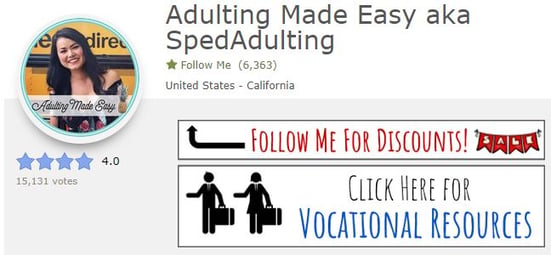
Adulting Made Easy is a well-known publisher on the Teachers Pay Teachers (TpT) online education marketplace.
This vendor has more than 475 products available on TpT, including a bundle on looking professional.
The bundle costs $21 to download and contains four of Adulting Made Easy’s most popular resources related to professionalism: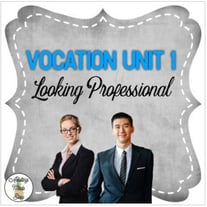
- Looking Professional - Digital Interactive Lecture
- Looking Professional - Reading Comprehension & Functional Worksheet
- Looking Professional - Vocabulary Pack
- Looking Professional - Social Narrative
Looking Professional - Digital Interactive Lecture
This unit introduces vocabulary and skills related to looking professional for an interview. It includes an interactive lecture presentation and mini quiz that checks student understanding.
Looking Professional - Reading Comprehension & Functional Worksheet
This resource includes nine worksheets that require students to think critically and apply what they have learned in order to determine what is and is not professional.
Looking Professional - Vocabulary Pack
The vocabulary packet has a total of 270 pages of resources, including task cards, bingo cards, matching worksheets, writing assignments, and interactive activities to teach professionalism.
These resources help reinforce the concepts and skills discussed throughout the lessons.
Looking Professional - Social Narrative
The final resource within the unit is a 29-page booklet that goes through the steps of preparing for a professional interview or day at work.
All together, this Vocation Unit will fill about one month’s worth of classes while helping you teach the basics of looking professional.
As a result, this vocation unit would work best for a teacher who wants to spend multiple weeks focused on professionalism skills.
What’s great about this unit is the variety of teaching strategies included. You’ll be able to keep students engaged by mixing it up with lectures, worksheets, assessments, hands-on activities to teach professionalism, and more.
However, it’s important to note that these resources are geared towards life skills and special education.
If you plan to use this bundle, you may need to adjust the content or skip some of the worksheets in order to align with the goals of your course.
2. Skills to Pay the Bills from the US Department of Labor
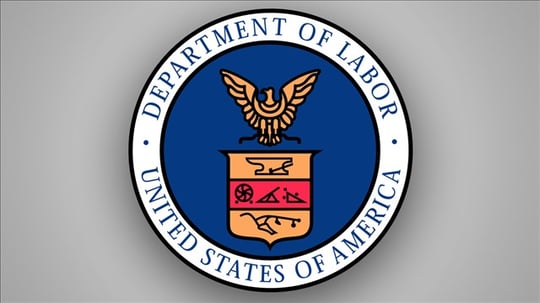
The US Department of Labor is attuned to the gap between the skills students have and the ones employers expect.
To help students become workforce ready, they developed a soft skills curriculum called Skills to Pay the Bills.
The curriculum includes lessons and activities to teach professionalism and five other career readiness topics.
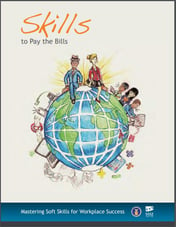 The professionalism unit is made up of five lessons:
The professionalism unit is made up of five lessons:
- Professionalism in Today’s Workforce
- Professional Work Attitudes
- Teamwork - An Essential Element of Professionalism
- Is It Considered “Professional” to Have Friends in the Workplace?
- Self Reflection: Professional Problem Solving at its Best
Professionalism in Today’s Workforce
This lesson helps students learn about generational, cultural, and diversity gaps in the workplace in order to build a better understanding of how to maintain professionalism.
Professional Work Attitudes
This activity involves a discussion of workplace attitudes of employers and employees. It also focuses on how a person’s attitude can impact those around them.
Teamwork - An Essential Element of Professionalism
The third lesson helps students identify their strengths and weaknesses in professional actions such as productivity, timeliness, and problem solving. It then provides an opportunity to reflect on their skills and how they can use them to work more effectively with others.
Is It Considered “Professional” to Have Friends in the Workplace?
This activity provides scenarios to help students understand both the benefits and drawbacks of workplace friends. It also encourages students to think of how they can manage friends in the workplace in order to be an effective employee.
Self Reflection: Professional Problem Solving at its Best
The final lesson in the unit connects professionalism with problem solving skills. It involves students looking ahead to their future and then reflecting on professional decisions they could make to help them reach their goals.
Overall, each lesson consists of a class discussion, a small group activity, an individual journaling activity, and an optional extension activity.
In total, the unit will give you between two and three hours-worth of content.
That makes Skills to Pay the Bills a good a supplemental resource to mix in with other materials related to professionalism.
So, if you need a stand-alone resource to carry your professionalism lessons, this option might not be the right fit.
3. Lesson on Professionalism in the Workplace from Texas CTE
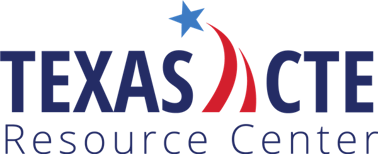
Texas CTE is an online resource center filled with instructional materials for CTE teachers in Texas.
Though the organization is focused on helping teachers in Texas succeed, teachers across the country can make use of the lessons provided.
Among the hundreds of resources on the Texas CTE site, they provide a lesson plan titled Professionalism in the Workplace.
The lesson is designed to help students learn and demonstrate an understanding of professional workplace standards.
Specifically, the lesson objectives state students should be able to:
- Define terms related to professionalism and ethics
- Identify specific components of professionalism
- Identify appropriate wardrobe and grooming expectations
- Identify professional communication and determine its appropriateness
To help students meet these learning objectives, the lesson plan includes a mix of lecture materials, discussion questions, assessments, and independent activities to teach professionalism.
In total, the Professionalism in the Workplace lesson is estimated to fill five class periods.
Overall, this option is a great introductory resource on how to teach professionalism to high school students.
If the lesson objectives line up with your course standards, you’ll definitely want to incorporate this resource in your curriculum!
Need Another Lesson Plan for Teaching Professionalism?
At the end of the day, there is no single “best” option when choosing how to teach professionalism to students. It all depends on the needs of you, your course, and your students!
To sum it up, here’s where each professionalism resource works best:
The Vocation Unit from Adulting Made Easy is the best option if you want to spend multiple weeks teaching professionalism.
The Skills to Pay the Bills unit on professionalism is a great supplement to add to an existing curriculum on professionalism.
The professionalism lesson plan from Texas CTE is a good resource to teach the topic in one week of class periods.
Each of these resources can act as an excellent supplement to your existing curriculum.
But if you’re looking for a more robust curriculum solution, consider checking out the Business&ITCenter21 digital curriculum from AES.
The curriculum is designed to guide you in how to teach professionalism, communication, and other career skills.
To see what AES has to offer, you can download a free professionalism lesson plan from within the digital curriculum.
This lesson helps you introduce students to the characteristics of professionalism and helps them understand how unprofessional behavior can impact their careers.
Click below to download your free lesson to start teaching professionalism now!


